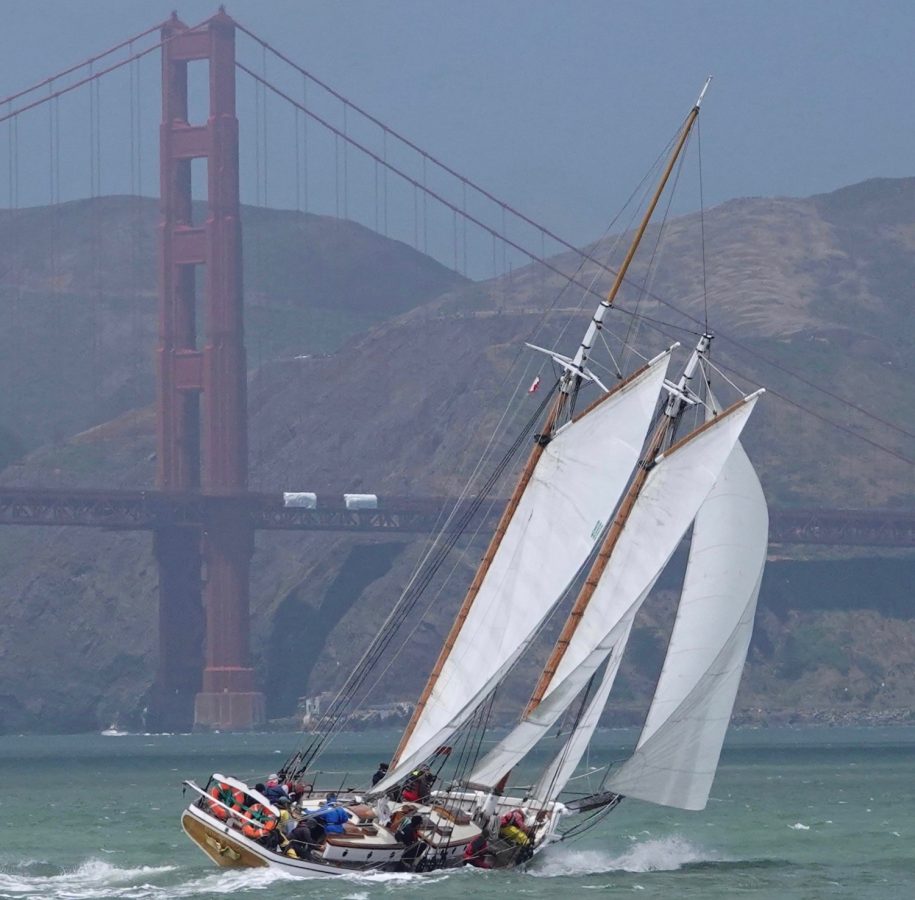
The Ageless Tradition of Master Mariners Racing: A Stark Contrast to SailGP
As the excitement of last weekend’s sailing activity slows to a more manageable Bay Area pace, we’re reminded of the stark contrasts among the modern-day athleticism of SailGP’s foiling catamarans, the gentler movements of the Great Vallejo Race fleet, and the beauty of the traditional, wooden vessels gearing up for this month’s Master Mariners Regatta. Our thoughts led us to consider where the art of sailboat racing began, and we turned to our own pages for the answer. In May’s Latitude 38, Martha Blanchfield shares some of the history behind Bay Area racing and the Master Mariners.
People often ask, “When did sailboat racing start on San Francisco Bay?” The answer is, about the time the second sailboat arrived. With the annual Memorial Day weekend Master Mariners Race on the calendar for May 27, we thought it a good time to revisit the roots of San Francisco sailing and the Master Mariners Benevolent Association (MMBA).

A journey that started on the East Coast meant a 15,000-mile passage around Cape Horn. The alternate route passed along the Atlantic Coast south to Panama, across the 60-mile Panama Isthmus, and finally again by ship, north along the Pacific coast. Companies providing ocean transportation included the US Mail Steamship Company, which carried US mail from New York City to New Orleans and Havana, then on to the Isthmus of Panama. In 1850, the company extended its route to San Francisco by adding a Pacific line of steamers. The federally subsidized Pacific Mail Steamship Company and Accessory Transit Company also brought passengers to San Francisco. Still more were transported by steamship from New York City through overland portages in Nicaragua and Panama, then north. Supply ships arrived. Hundreds of private vessels arrived, many with a one-way destination, which were then hastily abandoned and left to rot as crews deserted and raced to the gold fields. One estimate states 500 to 1000 ships once moored in the San Francisco harbor.
Continue reading at Latitude38.com.
Correction: St. Francis staff commodore John McNeill helpfully pointed out in our comments section that our original caption was wrong when it said, “Beau Vrolyk is the current steward of David Crosby’s former schooner Mayan.” To see that caption you’ll have to read the story in the magazine. Thanks John.

But the photo is of St Francis YC Staff Commodore, Terry Klaus, Brigadoon.
Whoops. Just goes to show we’re still humans over here and haven’t replaced ourselves with ChatGPT yet. AI never would have made that mistake. Right?